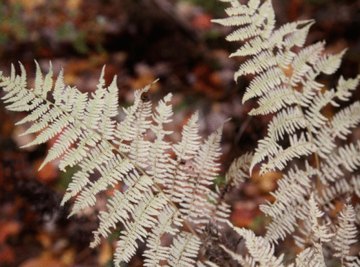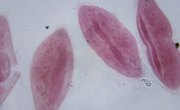
In biology, all organisms on Earth are divided into categories. This makes it easy to identify the characteristics of an organism, as all organisms in a category will have similar traits. The most commonly used system for categorization is the five-kingdom system. The largest category in this system is called kingdom, and has five subdivisions: Animalia, Plantae, Fungi, Monera and Protista. All known organisms fall into one of these large categories.
Animalia
The kingdom Animalia includes all animals. To be classified as a member of Animalia, an organism must meet some specific characteristics that all animals have in common. Animals are all multicellular organisms, lack cell walls and chloroplasts, and have complex cell structures with organelles and a nucleus. All animals are heterotrophs and must ingest their food rather than creating energy. Most members have cells that are specialized into tissues, and many members have some form of locomotion, such as flagella, cilia or contractile muscle tissues.
Plantae
The kingdom Plantae includes all plants. Members of Plantae, like members of Animalia, are all multicellular. However, all members of Plantae are autotrophs and acquire their nutrients and energy from sunlight by using structures in their cells called chloroplasts. Although gametes of plants may move, the adult forms of these organisms do not have a method of locomotion. The cells of members of Plantae all have organelles, nuclei and a cell wall, which helps the cell to retain a rigid shape.
Fungi
Members of the kingdom Fungi include all fungi. All members of Fungi are multicellular and lack a method of movement. Typically, members of Fungi live on a substrate, which they use for food. They have complex cell structures with organelles and cell walls, like plants, but have no chloroplasts. They acquire nutrients by secreting digestive enzymes and absorbing nutrients. Most are saprophytes and absorb nutrients from dead organic material, but some are parasitic.
Monera
Members of the kingdom Monera are all single-celled and extremely small. They lack complex cell structures like organelles and nuclei, and instead have a loop of DNA as their genetic material. Members of this group are the oldest organisms on Earth. Members of Monera may ingest nutrients or create their own via photosynthesis, though most ingest nutrients. Unlike other kingdoms, which show variety in reproductive methods, members of Monera only reproduce asexually.
Protista
Members of Protista are usually single-celled organisms, and there is quite a bit of variety within the kingdom. Most members have the ability to move via cilia, flagella or amoeboid movement. Most lack a cell wall. All have a nuclei and organelles, but some have chloroplasts and some do not. This leads members of Protista to be further divided into those that are plantlike and those that are animal-like, as those lacking chloroplasts must ingest nutrients like an animal while those with chloroplasts can use sunlight for their energy. Although there are some common characteristics in this group, it can be considered a group for organisms that do not fit into other categories.
References
Photo Credits
Jupiterimages/Photos.com/Getty Images
